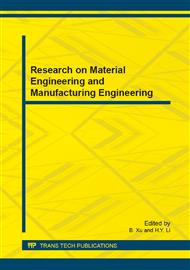p.43
p.49
p.53
p.57
p.63
p.67
p.71
p.75
p.79
Mineral Slat of Mahai Salt Lake Dissolution Experiment and Numerical Simulation
Abstract:
Mahai salt lake has disadvantages of water shortage and low grade KCl (KCl<8% wt/wt)). First, the brine formula experiment for dissolution slat mine was finished under keeping brine steady seepage, which the KCl content in product brine is greater than 1.2% (wt); then, this work obtained the seepage coefficient that is 1.836×10-6 m/s; the three-dimensional steady seepage finite element model was build for simulation brine seepage process with different pressure head, and the results showed that the simulation values using the model is basically consistent with the experiment data and the maximum difference is less than 5%. So the model is suit for local dissolution experiment design.
Info:
Periodical:
Pages:
63-66
Citation:
Online since:
November 2013
Authors:
Keywords:
Price:
Сopyright:
© 2014 Trans Tech Publications Ltd. All Rights Reserved
Share:
Citation:


